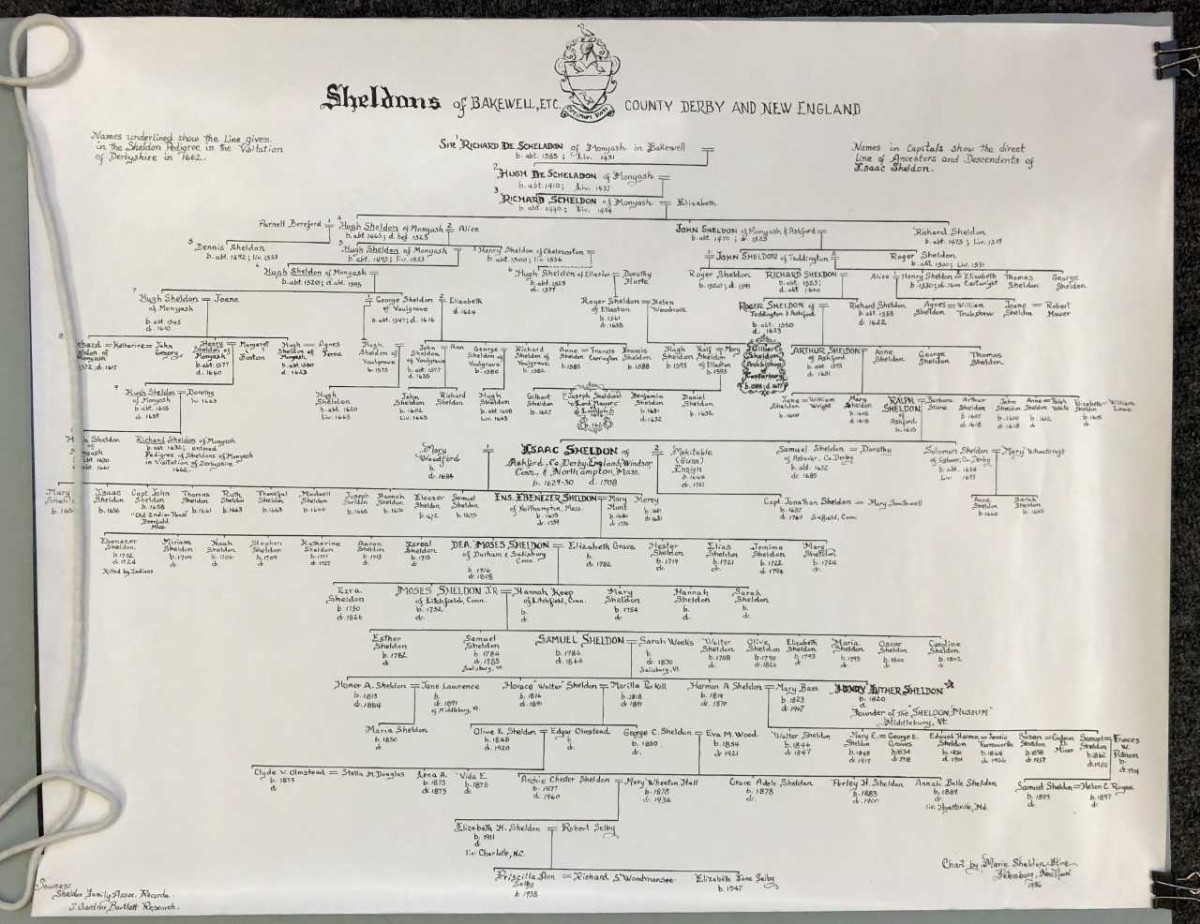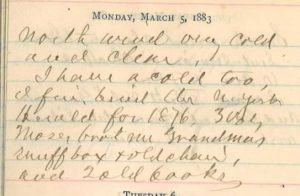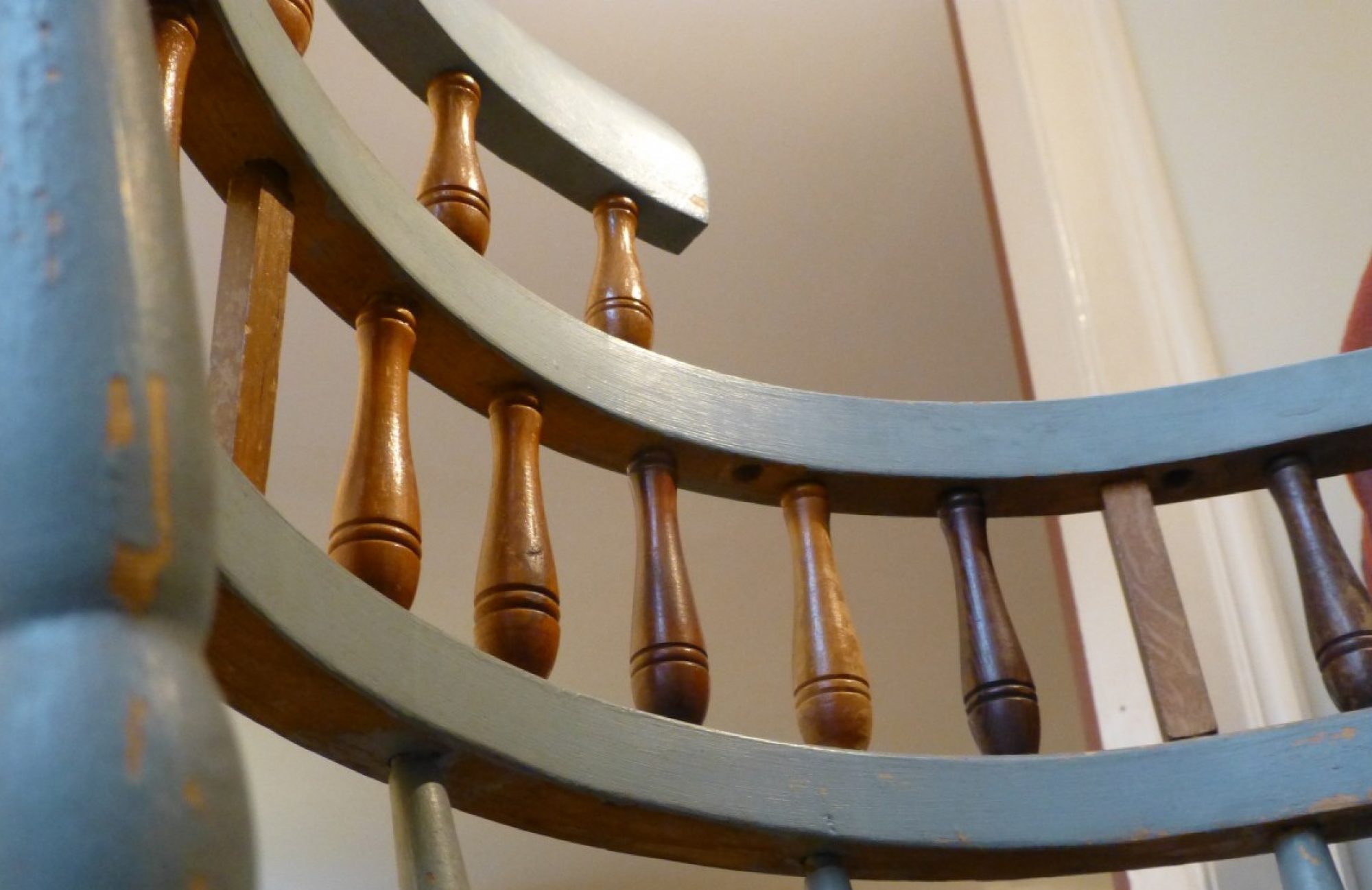
After arriving in 1810 in Salisbury, Vermont, a picturesque small town located just under ten miles south of Middlebury, from Salisbury, Connecticut, Moses Sheldon immediately moved his large family into a modest, simple, and quaint abode that, while free of opulence and magnitude, provided more than sufficient shelter for his unit of the Sheldon clan. The house, located at the time directly adjacent to that of Louise Nelson on the road that is today Route 7 remained in the possession of the Sheldon family until 1883, as Moses, the grandfather of Henry Sheldon, passed the house down to his namesake Moses, one of Henry’s numerous uncles, who then ultimately sold the house to Frank B. Nelson, a relative of the home’s longtime neighbor Louise, in that year. 1 The new buyer chose to dismantle the humble edifice and construct a new home on the site later on in 1889.2 Henry’s uncle Moses bestowed several family artifacts upon Henry on March 5, 1883, including a piece of wood from the frame of the longtime Sheldon family residence, as indicated in the Museum acquisition ledger and in Henry’s own diary.3


Though it is unclear why exactly Moses Sheldon, born in 1752, chose to migrate from Connecticut to Vermont in 1810, it is possible he was encouraged by his father-in-law, Samuel Keep, who was an original proprietor of several towns in the area. Moses remained married to Samuel’s daughter Hannah until his death in 1828 at 76 years of age, and his widow remained in the Salisbury, Vermont home until her own death in 1841 at age 82. The two were fortunate to have a wealth of children before their respective passages, thereby ensuring that the home remained occupied for a substantial period of time by numerous members of the family, the last of which, Moses, as discussed earlier, elected to sell the home to Frank B. Nelson. This new owner, the first non-Sheldon man to own the home in almost a century, elected to remove and dismantle the old homestead in order to construct a more modern edifice on the property, “much to the regret of former occupants and friends” who found substantial sentimental value in the historic home.4
While the house from which this spindle is drawn is fairly innocuous on a larger level, as neither the home nor its residents maintained major significance during the time or today, its inclusion in the relic chair serves to illustrate a critical aspect of relics themselves. Relics are, oftentimes, undoubtedly drawn from famous, transformative, and iconic sources endowed with significance for nearly everyone who hears of them; however, such importance is not essential to the creation of a relic. Instead, as is the case in this instance, the source of a relic can be of entirely personal significance, of perhaps a more subjective, familial, and intimate kind. Therefore, while we today may not revere Moses Sheldon’s home as one of history’s finest, its inclusion indicates that to the Sheldon family, a people iconic to Middlebury and the state of Vermont in their own right, this home was a critical piece of their hereditary tapestry.
-Trevor Schmitt ’18
Footnotes
[1] Max P. Petersen, Salisbury–From Birth to Bicentennial. Salisbury, VT: Dunmore House, 1991.
[2] Henry Sheldon. “Sketch of East Street Salisbury Vt, 1903,” Collection of the Henry Sheldon Museum, Middlebury, VT.
[3] Henry Sheldon. “Henry Sheldon Personal Diary,” Collection of the Henry Sheldon Museum, Middlebury, VT.
[4] Henry Sheldon. “Sketch of East Street Salisbury Vt, 1903,” Collection of the Henry Sheldon Museum, Middlebury, VT.
